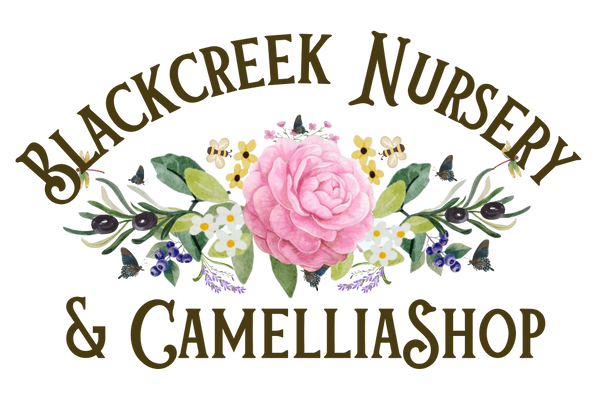
I've been growing Camellias for over 30 years and it still intrigues me how many camellias are misidentified or just labeled as something because of the way it may look.
The most popular Camellia - Pink Perfection- is also the most incorrectly identified. I see it over and over again - people suffer from a disorder called 'Pink Perplexion' in which the decision to name a camellia lies with the idea that if it's pink and formal double then it must be Pink Perfection! So many times it is labeled as such when in reality it is nowhere near the most common version of the old-time flower.
The perplexing part of Pink Perfection is that I'm not sure if anyone really knows for sure what the real Pink Perfection looks like or what the details are in bloom habits, growth structure, and more. In fact, Pink Perfection is not even its real name!
So to try to solve the mystery, I went to the International Camellia Register, which offered a little glimpse into the complication of this remarkable Camellia cultivar.
According to the listing, 'Pink Perfection' as we know it, was originally named 'Frau Minna Seidel' and 'Uso Otome' and was imported to US in 1875 from Japan. It has also been known as ‘Lee E. Markley’, ‘Pink Pearl’, ‘Badgen’s Beauty’, ‘Burgdorf Beauty’, ‘Hime-otome’, ‘Momoiro-otome’, ‘Awa-otome’, ‘Virgin'.
It is said that the Leaves are broadly elliptic and densely branched. Petioles are a little hairy. Flowers pink (Rose Madder 23/3), formal double, keeping a bud centre for a considerable period. Size 6-7 cm across with about 60 petals. Flowers mid-season to late.
They also list Camellia 'Pink Perfection' as Camellia rusticana 'Otome'. Many of the varieties I have seen look more like a japonica - so that could be another discrepancy.
The Many Pink Perfections
Just going through some resources like Camellia books, camellia nurseries, and even internet sources like photo galleries and online sellers of Camellias, I found a few dozen different flowers that were called 'Pink Perfection' and many of them were different colors, bloom shapes, and some were shown as blooming in the fall while others were blooming late season. They all had one thing in common - they were pink formal doubles and therein lies the perplexion!
Years ago, in the early days of what I call the Camellia explosion, most notably during 1940-1960, different plants were known by different names in different regions. We didn't have the luxury of the internet, digital images, or even a lot of books to share and compare camellia cultivars. What a cultivar someone knew on the west coast as one variety could be a completely different variation on the east coast. Because of this 'mixup' of sorts, you had major efforts in trying to standardize camellias, so this problem of naming camellias could be addressed. Thus the seeds of nomenclature were planted with the creation of the 'American Camellia Catalog' and finally with the forming of the American Camellia Society in the early 1940s and 1950s. The hopes were to have communication between all growers within the USA to put an end to double-naming!
But I fear, that even with all of the efforts to establish true identities, there still lies a great deal of this uncertainty and it is evident with Pink Perfection.
After searching, here are just the camellias from many sources that were called Pink Perfection. I had more, but this is all that I could fit onto one page. Can you see the diversity of flowers that are being labeled as Pink Perfection? Surprisingly, most of these images came from nurseries that sell Camellias.
 '
'
Our Pink Perfection Cultivar
The plant we grow today as 'Pink Perfection' closely resembles the description given in the International Registry in flower form, size, leaf structure, and bloom season.



The plants we have were originally obtained from old gardens in Savannah that date back to pre 1940's. One garden, in particular, had extraordinary labels and the owner was meticulous in labeling correctly to what was identified at the time throughout the region as "Pink Perfection". But this is the Pink Perfection that was growing in the Southeast region. Who's to say that other Pink Perfections in other regions were not labeled and historically noted just as this?
How Can We Tell Which is Which?
We may not ever be able to learn the true identity of Camellia Pink Perfection. It may remain a mystery forever. Fortunately, newer cultivars of camellias developed since the establishment of nomenclature go through a registration process and are documented which may lessen the confusion for future generations on the perplexing dilemma of true camellia identity.
Before you put a name on your plant, do your homework as best you can. Do you know where your plant came from? Do you know its history? Better yet, does the grower you purchase from know its history? Remember, all dogs are different, and so are Camellias. Not every small fuzzy dog is a poodle, likewise not all pink formal doubles are Pink Perfection!

